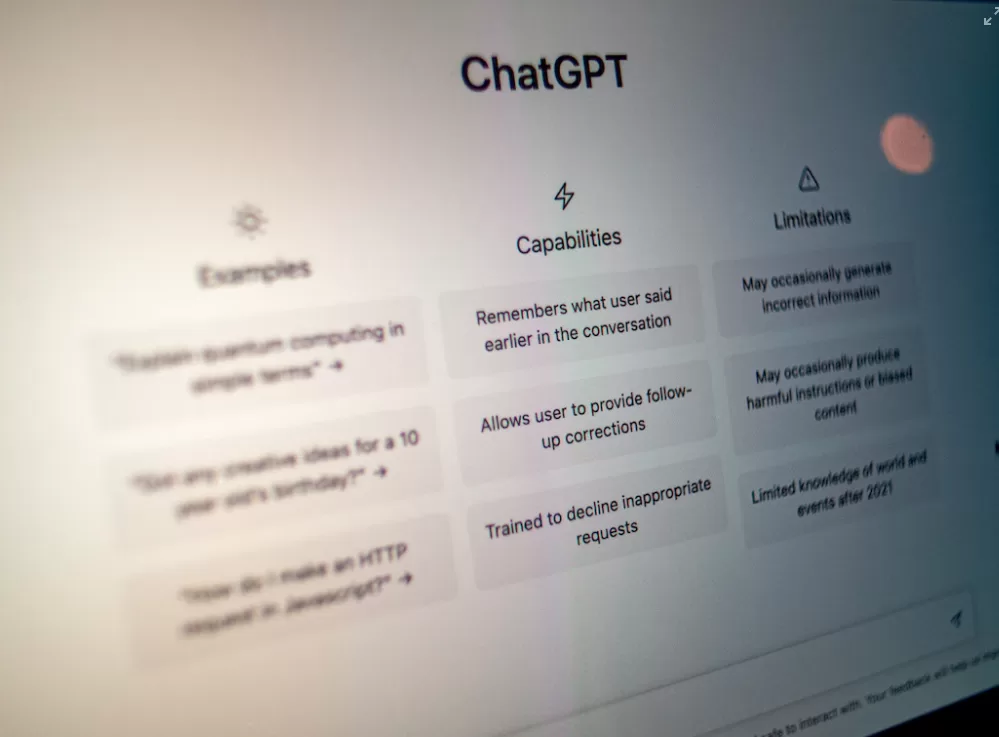Say goodbye to sitting on hold, waiting for your bank’s customer service team to pick up the line and answer your questions. Today’s AI-powered chatbots can easily take the reins, providing quick responses to your inquiries no matter where you are or what time it is.
AI-powered chatbots have attracted a lot of attention over the past year, with OpenAI’s ChatGPT flooring the general public with its ability to do everything from writing lengthy blog posts to creating the code for a new app. Other chatbots, like Google’s Bard and Baidu’s Ernie, have similar capabilities.
What does the release of all these chatbots mean for the future of customer service? In this article, we’ll look at the potential uses of AI-powered chatbots, especially among organizations that use them to interact with their client base.
What Is an AI-Powered Chatbot?

Prior iterations of chatbots were not particularly impressive. Driven by formulaic flowcharts, they could respond to basic inquiries but weren’t trained to understand natural language.
You’d find them on the bottom corner of a company’s website, eager to answer questions about the organization’s opening hours or direct you to a particular page. Since most users could already find these pages with ease by using the navigation menu, these older chatbots were not all that helpful.
While previous generations of chatbots were more of a nuisance than a benefit, the newest ones are much more powerful. They’re trained in machine learning and natural language processing, and their answers can eerily resemble those of a human. With the proper training and inputs, an AI-powered chatbot can perform functions such as:
- Providing directions
- Recommending products that suit your tastes
- Finding your account information
It’s important to remember, too, that we’re likely only on the cusp of AI’s potential, particularly in customer support. As the technology continues to improve, there will be even more use cases for AI-driven chatbots.
The Current Capabilities of AI-Powered Chatbots
AI-powered chatbots are having a moment, and their current abilities are pretty impressive. Here are a few ways companies use them to improve customer support.
Provide Personalized Assistance

AI tools feed on data, which many websites are awash with. Companies with a lot of first-party data on their customer’s browsing habits are most likely to see the benefits of personalized AI-driven chatbots that can provide their clients with tailored assistance.
For instance, consider an e-commerce company with thousands of products, a robust social media following, and a dedicated email subscriber list. That business has a lot of information about its customers, including their:
- Basic demographics
- Prior purchase history
- Browsing behavior
- Geographic location
They could use the data to “teach” the AI tool, which could in turn provide personalized help to clients visiting the website.
In this case, the AI tool could interact with a returning client, using its knowledge about them to make product recommendations. If the customer regularly buys baby girl clothing from the store, the chatbot could recommend other baby clothing options in the appropriate size and colors that suit the customer’s tastes and budget.
Of course, AI personalization isn’t limited to e-commerce. Its potential extends to service-oriented companies, like banks, insurance agencies, medical facilities, and any other business that stores client information. The AI chatbot can use the information it has to answer any client questions, ensuring they receive assistance at the same level that they’d receive if they spoke with a human instead.
Handle Complex Queries
Previously, chatbots weren’t particularly good at answering complicated questions. Basic inquiries like “Is it forecasted to rain today?” were all it was capable of answering. Anything requiring deductive reasoning or a step-by-step answer would likely confuse the chatbot and lead to inaccurate answers.
Today’s AI-driven chatbots are much more sophisticated. Since they incorporate natural language processing as part of their training, they can discern the meaning of longer, more complex queries and search for relevant answers.
For instance, take an example of a bank incorporating an AI chatbot into its website. When a client logs into their account, they can ask the AI chatbot questions like:
- How much am I saving each month?
- Can you show me a pie chart that separates my expenses into categories?
- What loans are available with an interest rate of less than 10%?
- I lost my debit card. Can you send me a replacement within two business days?
Using information gleaned from the bank’s website and the client’s account, an AI chatbot could quickly provide customer support for all of these queries. It could create a simple graph that divides customer transactions into categories and perform the steps needed to issue a quick debit card replacement to the customer’s address.
Provide Exceptional Customer Service
One of the hallmarks of a stalwart company is exceptional customer service. Clients want organizations to be there when they need help, whether they’re looking to make a purchase or need assistance with something they’ve already bought. A company with customer support that doesn’t live up to expectations may find itself on the other end of bad reviews and client complaints.
With the help of an AI-driven chatbot, it’s possible to provide customer service that exceeds client expectations. Since AI tools don’t take vacations or need time off, they’re always on. If a client has a question at 2 a.m., they can visit the company’s website and interact with the chatbot, which can likely answer their question and provide them with the help they need.
Today’s chatbots can store prior client conversations, much like humans do when talking with friends, colleagues, or relatives. That makes it possible for the chatbot to retrieve previous interactions and use them to answer future customer questions. It’s a very natural process that improves the customer experience.
Instead of starting over from scratch every time they visit a website, the AI chatbot pulls up the prior conversation and starts there. In contrast, calling the customer service department usually involves talking to multiple representatives who may have differing answers to a client’s questions. They’ll also need to retrieve files and access accounts, which take up a customer’s time.
Benefits of Using AI-Powered Chatbots in Your Business
There’s a growing consensus of approval among clients interacting with chatbots for customer support needs. According to Statista, 32% of customers rate their experience with chatbots as neutral, while 25% state they are happy or delighted with the tools.
Even more interesting: a report from Juniper Research found that companies in a variety of market sectors, including retail, healthcare, and banking, may save up to 2.5 billion customer service hours in 2023 alone from using chatbots. That’s a substantial potential cost saving, especially for organizations that reduce their reliance on human customer service representatives.
Read on to learn a few of the benefits that AI-powered chatbots can offer businesses.
Streamline Operations
Companies that implement AI-driven chatbots into their customer service functions can potentially save money while improving the support they provide their clients.
Customers who need quick assistance and don’t want to pick up the phone may find that the chatbot can answer their questions. As people become more accustomed to the tool’s usefulness, they’ll be more likely to turn to chatbots for help rather than sending emails or making phone calls.
As AI chatbots continue to improve, companies won’t require the extensive customer service department they once did. Instead, they can redeploy their team to other areas or limit hiring altogether.
Improve Satisfaction
The primary goal of AI customer support chatbots is to assist clients. The chatbot can handle even the most complicated questions if it has proper programming and training. Clients will receive the help they’re looking for nearly instantaneously, improving customer satisfaction.
A reputation for phenomenal customer service is something many companies strive for. Organizations that provide excellent support are more likely to retain and attract new clients.
Increase Efficiency
When an organization can partially rely on its AI chatbot for customer support, employees can handle more complicated queries that are a better use of their time. It frees up the office to focus on other pressing issues that add value to the company.
For instance, customer service could become more involved in analyzing product or service issues and developing solutions that fix those problems. By doing so, there will be fewer complaints among clients.
AI-Driven Customer Support Chatbots Are Here to Stay
The benefits of AI-powered chatbots are significant, particularly in customer service. Through a chatbot, it’s possible to improve the client experience and provide personalized service. Companies also benefit from streamlined operations and fewer hours spent addressing basic inquiries. With the right tools, it is indeed possible to improve customer support while keeping an eye on the bottom line.

